Different types of motorcycle tyres & their comparison based on purpose.
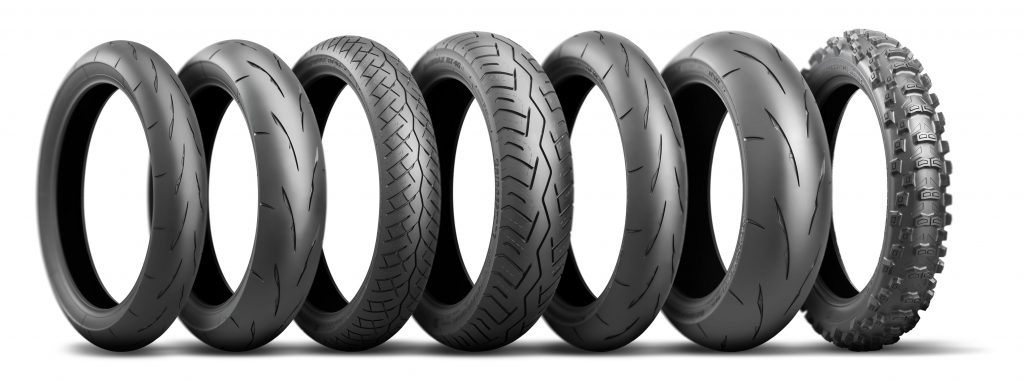
A lot of people ask questions about motorcycle tyres. There are four main types of tyre tread patterns: street, 60/40, 40/60, and dirt. While there are more, understanding these four will help you choose the right tyre for your bike.
Street tyres have smooth tread patterns with diagonal grooves, like the Pirelli MT 75. These grooves help channel water away from the tyre, preventing the dangerous build up of water between the tyre and the road.
A 60/40 tyre is 60% street and 40% dirt. These tyres have larger surface area knobs, providing a good grip on the road while still offering some traction off-road. An example of this is the Pirelli MT90.
In contrast, 40/60 tyres are more suited for off-road, with smaller knobs spaced farther apart to better grip stones and rough terrain. An example is the Pirelli MT60.
Dirt tyres have widely spaced, small knobs designed strictly for off-road use. Riding on pavement with these tyres can feel unstable. The Pirelli MT 21 is a good example of a dirt tyre.
When choosing tyres, consider the type of riding you do most often. For instance, even if you mainly ride on the road, a 40/60 tyre might suit you better if you need good off-road traction. It’s also important to match the tread type of the front and rear tires. For example, using a street tyre in the front with an off-road tyre in the back can lead to poor control, especially when braking.
Lastly, don’t wait until your tyres are completely bald to replace them. Worn tyres lose their ability to grip the road, making them unsafe. I change my tyres when there’s still tread left and use the ABS to gauge when it’s time. When the ABS activates earlier than usual, it’s a sign that the tyres are losing traction.
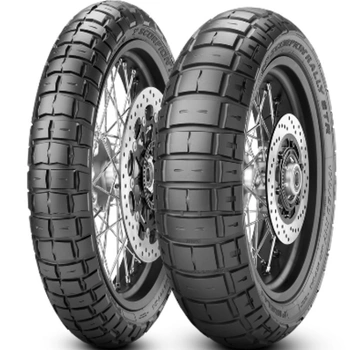
Dual Sport/ADV/All-Terrain tyres
These tyres are the most noticeable tyres and seen in a number of heavy dual sport or adventure motorcycles such as KTM 1290 Super Adventure, Honda Africa Twin and many more.
These tyres basically go in the 70% off-road and 30% on-road category. These tyres are distinct knobbed tyres which mean they are designed for off-road riding and have deep grooves with bigger blocks on the tread.
These tyres have a better grip on light sand, dirt, mud and rocks, intended for much of the highway use. A 50/50 mix is good if you are into dual-sport biking and a 70/30 riding is best if some light off-road riding.
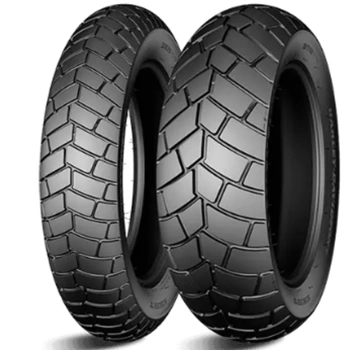
Touring/Cruiser tyres
Cruiser or Touring tyres are designed for heavy motorcycles and cruisers, to hold up to the weight of the motorcycle.
These tyres offer long mileage and good traction for wet conditions. Also, these tyres are seen in custom bikes, Harley-Davidson models like Electra Glide, Street Glide, American V-twin and more.
Coming to the design part of these cruisers or touring tyres, they a stiff sidewall to handle heavy loads such as packed saddlebags and two-up riding. These motorcycle tyres have deeper tread depths and sturdy construction to better mileage and less wear. Compared to other types of motorcycle tyres, cruiser tyres are heavy with harder compounds.
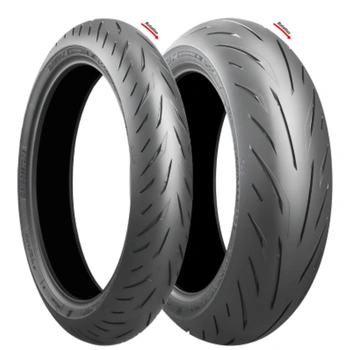
Sport/Super Sport/Hyper-Sport/Performance tyres
These tyres are designed for high-performance street bikes and sport bikes and have lighter weight and superb handling. Tyres in this category have precise handling and strong grip from edge to edge.
These tyres are designed with a more pronounced centre for easy transitions and smoother deep cornering.
These tyres are intended to offer high performance and stability especially in times of braking or cornering. The tyres are mostly made of multi-compounds and have fewer tread lines and yet a good handing on wet surfaces. These tyres are seen in sport bikes like Suzuki GSX-R1000R, Honda CBR and more.

Sport/Touring tyres
The tyres in his category are a mix of performance tyres and touring tyres, designed to deliver excellent traction and mileage.
These tyres are seen in naked bikes and sport bikes like BMW 1200 RT, Yamaha FZ and more.
These tyres are designed to offer the highest level of grip as possible.
These tyres are constructed with a harder compound in the centre for a stable ride and softer rubber on the side for excellent grip while cornering.
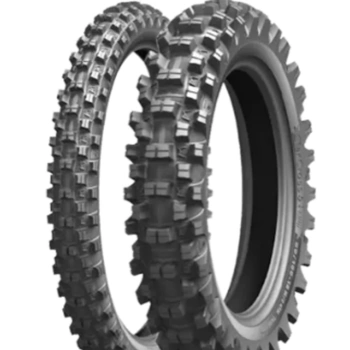
Off-road tyres
Off-road tyres are designed for rough and unpaved terrains like mud, dirt, sand or gravel and have deeper treads to offer more traction.
They are also known as Knobblies and their thick, deep treads provide maximum grip on loose surfaces.
Off-road tires have reinforced sidewalls which reduces the chances of puncture to a great extent.
Off-road tires are further classified into mud-terrain tires and snow tyres. Off-road tyre capabilities are also seen in All-Terrain tires as seen in the earlier part of the blog.
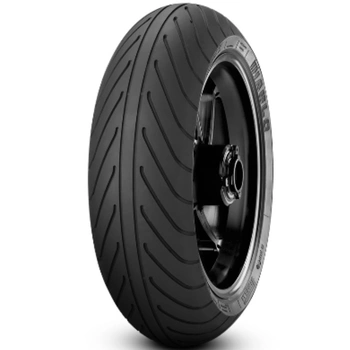
Racing/Competition tyres
These tyres are used on race tracks and are also known as race tyres, trail tyres and track tyres.
As the temperature of tyres is relatively very high on tracks due to higher speed, braking and accelerations, racing tyres are designed to operate at such temperatures.
These are made from soft rubber and various models have varying levels of rubber softness.
These have a slick shape to offer maximum surface contact and wear out very early in life due to softness of rubber.
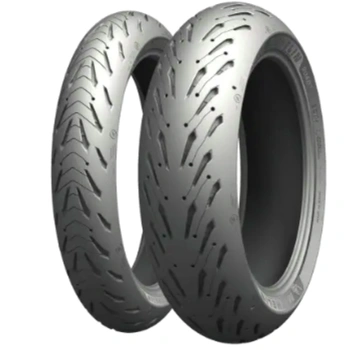
Street tyres
Street tyres are used for everyday riding where the rider does not ride at very high speeds.
These are made of hard rubber and have long durability. Street tyres have a better grip even on wet surfaces owing to more treads on the surface.
These tyres are manufactured to bear normal temperatures, unlike racing tyres that are designed to bear high temperatures.
Street tyres have enough grip to bear street hurdles but are not a safe choice whilst still cornering at aggressive speed.
What are the different tyre types for bike?
There are several types of bike tyres, but the main categories include street tyres, 60/40 tyres (60% street, 40% off-road), 40/60 tyres (40% street, 60% off-road), and dirt tyres. Each tyre type is designed for specific riding conditions, such as smooth roads, mixed terrain, or rough off-road trails.
How Bike tyre grip types affect handling?
Tyre grip plays a crucial role in handling and stability. Tyres with more surface contact, like street tyres, provide better grip on smooth roads, enhancing cornering and braking. Off-road tyres with larger knobs offer superior grip on rough terrain but can feel less stable on paved surfaces.
